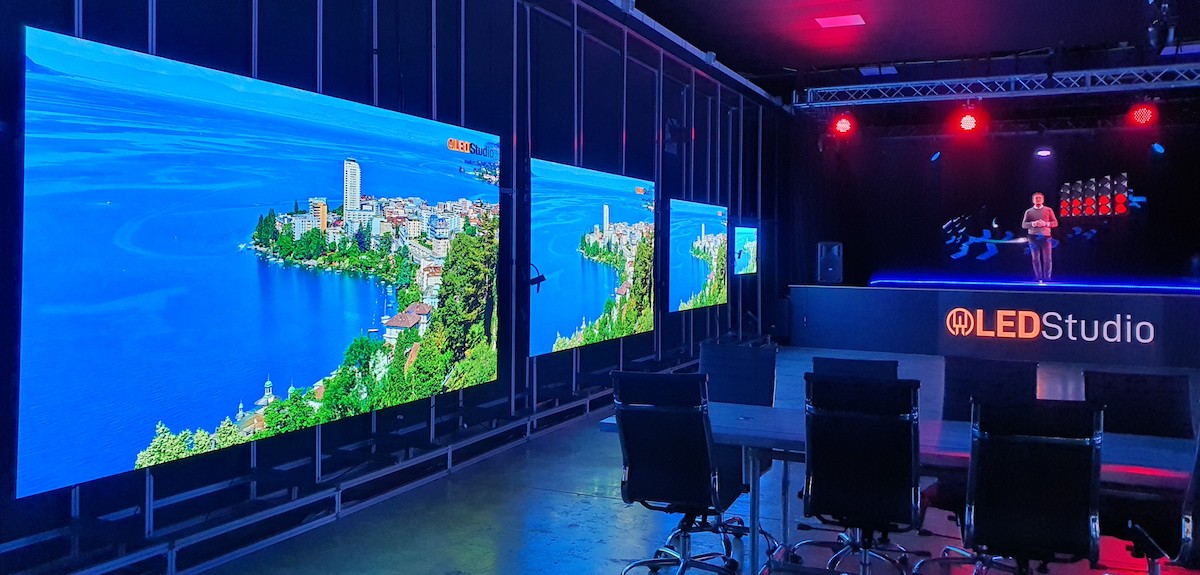
Industry Vet Zoll Hopes To Demystify Jargon-Filled LED Display Biz In InfoComm Talk
May 27, 2022 by Dave Haynes
If you are just starting to look into direct view LED as a display option, and running into a snowmageddon-level blizzard of unfamiliar terms and acronyms, a talk industry veteran Larry Zoll is doing at InfoComm in a couple of weeks might save you some precious brain cells.
Zoll’s June 8th talk is called: Demystifying New LED Products: How to Future-Proof Your AV Design Project. It’s part of the D=Sign two-day digital signage conference running at InfoComm, and as the title says, the intent is to help people who are looking at LED decode all the jargon, and develop some sense of how to proceed and what to use.
“It’s about trying to get through the alphabet soup that kind of consumes the narrow pitch LED market right now,” says Zoll, the Boston-area Director of Operations for The LED Studio, a longtime UK manufacturer that is expanding into the U.S. “Between GOB, COB, SMD, flip-chip, common cathode, and so on, there’s just so many acronyms and buzzwords out there that people don’t necessarily understand, and how they affect the projects they’re working on. I thought it would be good to bring a little bit of clarity to that.”
But does an integrator or end-user really need to know what Chip On Board (COB), for example, is all about?
“I think there’s a big impact on potential projects, right? It’s the difference between its brightness, contrast, durability. It’s whether or not you can touch something, all of those … and different combinations of them allow it to give you different different capabilities. Standard SMD is just one small part of the narrow pitch LED market now. There’s so much out there, that I think it’s going to be a while before the market really standardizes on something. We’re sort of in this wild west of, of different letters, there’s a lot of considerations to make based on what you actually need, that could potentially save you a lot of money, either in product cost or in lifetime cost, depending on how you approach a project.”
Zoll, who was for many years a managing director with Sensory Interactive, joined LED Studio last year. Though not as well known as some North American and global brands, the company is well-established in the UK and has manufacturing facilities in China.
He says while conventional SMD LED displays have dominated the marketplace in recent years, but sees marketplace demands shifting to similar technologies like Glue On Board (GOB) LED displays – the “glue” referring to an epoxy coating that protects the fragile LEDs from accidental or purposeful damage. Numerous manufacturers now make GOB products, but the challenge is doing so in a way that retains visual quality. Some GOB coatings end up protecting the electronics but cause a lot of reflection, adversely impacting how a video wall looks to viewers.
“I think it really depends on the application, the protective aspects, and the durability, are definitely a part of it … and depending on the application, that protection may be the most important part of it. But for a lot of GOB products that I’ve seen, the manufacturers struggle with the reflectivity of the product.”
Zoll also plans to use the session to dig into the merits of mini and microLED, and how LED marketing that was almost entirely focused on steadily finer pixel pitch measurements has evolved.
“I think that we’re sort of in a similar realm as we were with digital cameras on phones five or six years ago, which was a race to the greatest number of megapixels. And then it was about larger sensors or wider color gamuts,” Zoll says. “We’re in the same space now. Just about everybody can can hit a fairly narrow pitch. And now it’s: “How can you make that image better?’ For some people, it relies on reducing the size of the diode to increase the the amount of black space. Some people are really focusing on making it more durable. I think in the next five years or so we’ll probably see manufacturers focus on a particular characteristic. So Manufacturer X specializes in really high quality durable displays, whereas Manufacturer Y may really focus on microLED displays.”
Zoll also plans to get into a discussion around the relative merits of mini and microLED, which are beautiful but can be stroke-inducing expensive, versus more established, mass-manufactured SMD LED products that cost substantially less, but can look just about as good.
Larry’s smart and a straight-shooter. It should be a worthwhile session. The InfoComm page has the details on D=Sign, how to attend, and so on …



Leave a comment